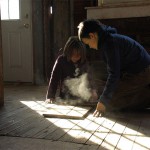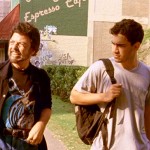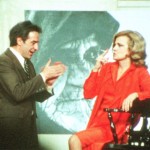Tag: Genre: American Indie
-

Lucky Life (2010)
Dir. by Lee Isaac Chung There’s a sequence about 25 minutes into Lee Isaac Chung’s new film Lucky Life that I’ve watched countless times over the past few months. In an earlier scene, the film’s four main characters — old college friends who reunite each year at a beach house on the Outer Banks — […]
-

2009 SFIFF Diary 2
Heddy Honigmann’s Oblivion, Frazer Bradshaw’s Everything Strange and New, Claire Denis’s 35 Shots of Rum (yes, again), Javor Gardev’s Zift, and Mikheil Kalatozishvili’s Wild Field.
-

St. Nick (2009)
American “regional” cinema (again with the ironic scare quotes), especially that of the indie variety, has an unfortunate tendency to come off like tourism, in the sense that the camera is too often set up in front of objects that only reinforce our preexisting sense of the place. “The South,” for example, is often reduced to a now-vacant and picturesque block of what was once a small town’s main street before the interstate and Wal-Mart moved in.
-

Lee Isaac Chung: The Storm of Progress
Originally published at Sojourners.
-

Half Nelson (2006)
It’s rare these days when I find myself identifying with a character in the same way that, say, the 7-year-old version of me identified with Charlie Bucket or the 15-year-old version of me identified with Holden Caulfield. But Dan Dunne, the crack-addicted, idealistic History teacher played by Ryan Gosling in Half Nelson, is more like me than any other character I’ve met in quite some time.
-

Abel Ferrara’s Battle with the Irrational
To watch the body of Abel Ferrara’s films, as I’ve tried my best to do over the last month and a half, is to see a man wrestling obsessively — sadomasochistically, even — with the Irrational. The stylized violence, the scenery-chewing performances, the gratuitous and exploitative female nudity — all are window dressing. What’s at stake here is nothing less than the very possibility of grace.
-

Diving Deep into Caveh Zahedi’s In the Bathtub of the World
This essay was presented at the 2005 conference of the South Atlantic Modern Language Association.
-

I Am a Sex Addict (2005)
In the opening shot, Zahedi addresses the camera directly, introduces himself as Caveh, and tells us that for many years he was a sex addict. His film is a frank, neatly-plotted, and curiously moving recreation of those years. It’s also incredibly transgressive and very, very funny. Quite a balancing act.
-

Week in Review
With apologies to Nick Hornby. While reading The Polysyllabic Spree, a collection of his “Stuff I’ve Been Reading” columns from The Believer, two things occurred to me.
-

Z Channel: A Magnificent Obsession (2004)
How would the tone of the film change, for example, had she included reports from the crime scene or interviews with his wife’s surviving family? Instead, we are offered only one quick glance at a photo of the woman who later would be brutally murdered, and a few fond remembrances of her from Harvey’s friends.
-

Slacker (1991)
Linklater, perhaps more than any other contemporary filmmaker, is alive to the potential and the basic human value of the men and women who walk in and out of his films. And he seems to have a particular fondness for the folks who live on the margins, whether by choice or necessity.
-

Fallen Creatures in a Fallen World: The Films of John Cassavetes
This essay was originally published at Sojourners.
-

Tarnation (2004)
Look closely at the image I’ve posted above. Mother and son. Finally at rest. Finally at peace. It’s one of Tarnation’s closing images and also one of its most poignant. A glimmer of hope. Love among the ruins. But here’s the thing: the scene is staged.
-

Random Musings . . .
On some recent viewings . . . Shame (Bergman, 1968) — Liv Ullmann and Max von Sydow star as Eva and Jan Rosenberg, cultured musicians who escape to a rural island when their orchestra is shut down during a war. Their new, more simple life as farmers is soon interrupted when their home is invaded, […]
-

From the Journals of Jean Seberg (1996)
Journals is at its best, I think, when Rappaport intertwines the lives and loves of Seberg, Jane Fonda, and Vanessa Redgrave. All are of the same age, all made films directed by their husbands (another of the film’s more interesting concerns), and all participated actively in radical political movements.
-

A Woman Under the Influence (1974)
It took me three tries to make it through John Cassavetes’s A Woman Under the Influence. I wasn’t bored by the film; I was in agony.
-

A Few Words Upon Discovering Cassavetes
John Cassevetes is my latest obsession. On a whim, I recently picked up a used copy of Faces, the story of Dicky and Maria Forst’s disastrous attempts to find peace and companionship outside of their loveless marriage. Shot entirely in stark, high-contrast black-and-white, and featuring Cassevetes’s trademark dialogue, Faces feels at times like a documentary — voyeuristic, discomforting, and brutally real.